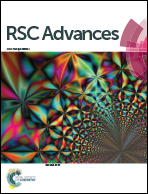A targeted metabolomic protocol for quantitative analysis of volatile organic compounds in urine of children with celiac disease
Abstract
Volatile organic compounds (VOCs) in biological samples have gained popularity for disease monitoring and diagnosis. Celiac disease (CD) is one of the many prevalent health conditions which are challenging to diagnose. The aim of this study was to optimize a solid phase microextraction followed by gas chromatography-mass spectrometry, for quantitative analysis of a wide range of VOCs in the urine of patients with CD. Multivariate design of experiment was used to optimize the extraction conditions for the analysis of 15 urinary VOCs. Based on the performed experiments, extraction using 2.98 g of sodium chloride and 21 μL of 6 M hydrochloric acid for 15 min at 30 °C, using a CAR/PDMS fiber in headspace mode was found to be the most effective procedure for the analysis of the selected biomarkers. It was also demonstrated that the proposed method could distinguish between children with CD and healthy children based on the profile of VOCs. It is believed that quantitative analysis of these biomarkers will extend our understanding of CD and could be used for monitoring in patients under treatment.



 Please wait while we load your content...
Please wait while we load your content...